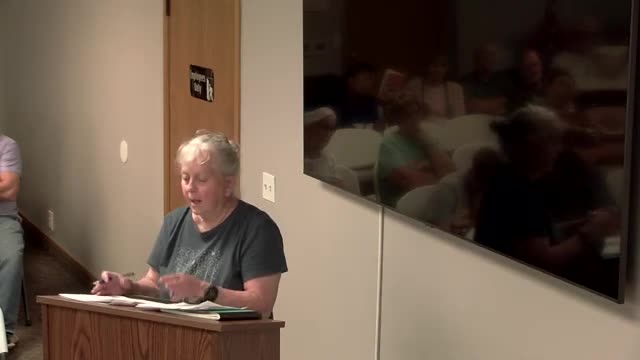Experts Warn Solar Farms Threaten Local Biodiversity
July 30, 2024 | Reno County, Kansas

This article was created by AI summarizing key points discussed. AI makes mistakes, so for full details and context, please refer to the video of the full meeting. Please report any errors so we can fix them. Report an error »

In a recent government meeting, discussions centered on the environmental impacts of solar farms, particularly in sensitive areas like the Cheney Reservoir. Concerns were raised about how solar installations can disrupt local ecosystems, affecting everything from biodiversity to the area's microbiome. One speaker highlighted that solar panels can inadvertently contribute to bird mortality, as their reflective surfaces may resemble water, leading birds to land on them and suffer fatal consequences.
Participants emphasized the need for a balanced approach to renewable energy, advocating for solar and wind energy while ensuring that these projects do not exacerbate existing environmental issues. The importance of thorough and transparent environmental data collection was also underscored, with calls for researchers to have better access to data from solar companies, which is often deemed proprietary and insufficiently detailed.
The conversation also touched on the necessity of responsible site selection for solar farms. Several attendees expressed strong opposition to placing solar installations near the Cheney Reservoir, arguing that such locations could harm wildlife and water quality. Instead, they suggested utilizing less ecologically sensitive areas or repurposing existing structures, such as rooftops of parking garages, for solar energy generation.
Overall, the meeting highlighted a growing concern among community members about the potential ecological consequences of solar energy projects, advocating for strict regulations and careful planning to protect valuable natural resources.
Participants emphasized the need for a balanced approach to renewable energy, advocating for solar and wind energy while ensuring that these projects do not exacerbate existing environmental issues. The importance of thorough and transparent environmental data collection was also underscored, with calls for researchers to have better access to data from solar companies, which is often deemed proprietary and insufficiently detailed.
The conversation also touched on the necessity of responsible site selection for solar farms. Several attendees expressed strong opposition to placing solar installations near the Cheney Reservoir, arguing that such locations could harm wildlife and water quality. Instead, they suggested utilizing less ecologically sensitive areas or repurposing existing structures, such as rooftops of parking garages, for solar energy generation.
Overall, the meeting highlighted a growing concern among community members about the potential ecological consequences of solar energy projects, advocating for strict regulations and careful planning to protect valuable natural resources.
View full meeting
This article is based on a recent meeting—watch the full video and explore the complete transcript for deeper insights into the discussion.
View full meeting
